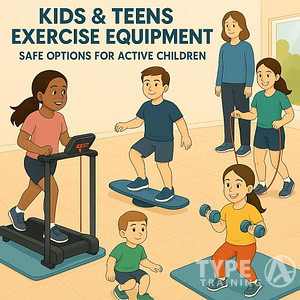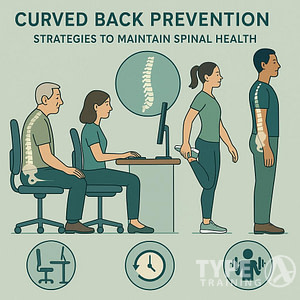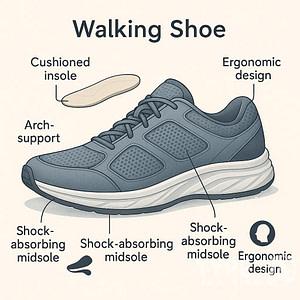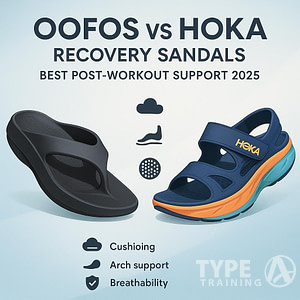If you’re an avid runner, you know how important it is to stay hydrated during your workouts. And with so many water bottle options on the market, it can be overwhelming to choose the right one for your needs. In this article, we’ll provide you with a brief overview of some of the best water bottles for running in 2023.
From collapsible bottles to handheld options, we’ll cover a range of products that are designed to keep you hydrated on the go. So whether you’re training for a marathon or just looking for a convenient way to carry water on your daily jog, we’ve got you covered. Keep reading to find out which water bottles made our list.
Key Takeaways
- There are many water bottle options available for runners, including collapsible and handheld bottles.
- Some popular choices include the Flexible Running Flask 250ml, Ultimate Performance UP6360 Kielder Handheld Water Carrier, and the 580ml Running Water Bottle.
- When choosing a water bottle, consider factors such as size, comfort, and storage capacity.
Recommended Fluid Intake for Runners: How Much Should You Drink?
(Image credit: rei.com)
Popular posts:
Staying hydrated during runs is crucial for maintaining performance and avoiding health complications. However, the amount of fluid intake can vary depending on the individual’s needs and the duration and intensity of the run. While the general rule of thumb is to drink to thirst and consume 4 to 6 ounces of fluid every 20 minutes, runners running faster than 8-minute miles may need to drink 6 to 8 ounces every 20 minutes. It’s also important to note that during longer workouts lasting 90 minutes or more, a sports drink should be consumed to replace lost sodium and minerals.
In addition to fluid intake, runners should also consider the type of hydration system that works best for them. Some runners prefer handheld water bottles or waist belts, while others may opt for hydration vests or soft flask water bottles. Whatever the choice, it’s important to choose a system that is comfortable, practical, and allows for easy access to fluids during the run. By staying hydrated and choosing the right hydration system, runners can perform at their best and avoid complications related to dehydration or overhydration.
Recommended fluid intake for runners based on duration and intensity:
| Duration and Intensity of Run | Recommended Fluid Intake |
|---|---|
| Less than 1 hour, low intensity | Drink to thirst |
| Less than 1 hour, high intensity | 4-6 ounces every 20 minutes |
| 1-4 hours, any intensity | 4-8 ounces every 20 minutes |
| More than 4 hours, any intensity | 6-12 ounces every 20 minutes |
| Longer workouts (90 minutes or more) | Consume a sports drink to replace lost sodium and minerals |
Note: Runners running faster than 8-minute miles may need to drink 6-8 ounces every 20 minutes.
Sports Drinks vs Water: Which is the Best Choice for Runners?
(Image credit: tvpw.org)
When it comes to staying hydrated during physical activity, many runners wonder whether sports drinks or water is the better choice. While both options can be effective, sports drinks offer some unique advantages that water does not.
One of the biggest advantages of sports drinks is their ability to replace lost electrolytes and minerals. During intense exercise, the body loses not only water but also important minerals like sodium, potassium, and magnesium. Sports drinks are specifically designed to replenish these lost nutrients, helping to maintain proper hydration and prevent cramping or fatigue.
Sports drinks offer unique advantages like electrolyte replenishment and energy provision that water does not. For runners looking to take their performance to the next level, investing in a quality sports drink may be worth considering.
Another advantage of sports drinks is their ability to provide energy during long runs or races. Many sports drinks contain carbohydrates, which can provide a quick source of energy to fuel your muscles and improve performance. This can be especially important during longer workouts or races where energy levels may start to dip.
On the other hand, water is a great choice for shorter runs or less intense workouts where electrolyte loss and energy depletion are less of a concern. Water is also a more affordable and widely available option, making it a convenient choice for many runners.
What to Look for in a Running Water Bottle
When choosing a running water bottle, consider options that attach to your hand or have belts to avoid the need for a tight grip. Soft flasks collapse as you drink and save space, but hard bottles are also available. Look for bottles with an on/off or lock valve to prevent spills. Most bottles hold 250ml-600ml, which is enough for short to medium runs. For more water, consider a hydration vest with soft flasks or a bladder.
| Factor | Considerations |
|---|---|
| Grip | Look for bottles that attach to your hand or have belts to avoid having to grip the bottle tightly. |
| Design | Soft flasks collapse as you drink and are often easier to drink from, but some may prefer hard bottles. |
| Valve | Choose bottles with an on/off valve or lock valve to minimize water spillage. |
| Capacity | Most bottles hold between 250ml-600ml, which is enough for short to medium length runs. Consider a hydration vest if you need more water, as they can hold multiple soft flasks and a bladder. |
Handheld vs. Waist Belt vs. Backpack: Which Water Bottle Is Best for Running?
(Image credit: nathansports.com)
When it comes to staying hydrated during a long run or hike, runners have three main options: hydration packs, waist belts, and handheld water bottles. Each option has its advantages and disadvantages, and the choice ultimately comes down to personal preference and the specific needs of the runner. In this article, we’ll explore the pros and cons of each option to help you decide which one is right for you.
Handheld Water Bottles
Pros and Cons Handheld water bottles are small, lightweight bottles that you hold in your hand while running. They’re a popular choice among runners who prefer a minimalist approach to hydration. Some pros and cons of handheld water bottles include:
Pros:
- Lightweight and easy to carry
- Don’t require a backpack or waist belt
- Easy to clean and maintain
- Can be less expensive than hydration packs or waist belts
- Can be easily accessible while running
Cons:
- Can only hold a small amount of water
- May cause hand fatigue or discomfort during long runs
- No storage for snacks or other essentials
Waist Belts
Pros and Cons Waist belts are similar to hydration packs, but they’re worn around the waist and typically hold smaller water bottles. They’re a popular choice among runners who want to carry water and other essentials without the bulk of a backpack. Some pros and cons of waist belts include:
Pros:
- Lightweight and easy to carry
- Don’t require a backpack or other gear
- Can hold multiple small water bottles
- Pockets and compartments for storing snacks and other essentials
Cons:
- Can bounce or shift during running
- May cause chafing or discomfort around the waist
- Limited water capacity compared to hydration packs
Hydration Packs
Pros:
- Can hold a large amount of water
- Pockets and compartments for storing snacks and other essentials
- Can help distribute weight evenly across your back and shoulders
Cons:
- Can be heavy and bulky, especially when filled with water
- Drinking tube can be difficult to clean and maintain
- May cause sweating and discomfort on your back during hot weather
- Can be expensive compared to waist belts or handheld water bottles
Which One is Right for You? The choice between a hydration pack, waist belt, or handheld water bottle ultimately comes down to personal preference and the specific needs of the runner. If you’re planning a long-distance run or hike and need to carry a large amount of water and other essentials, a hydration pack or waist belt may be the better choice. If you prefer a minimalist approach and don’t want to carry a lot of gear, a handheld water bottle may be the way to go. Consider your running style, the length of your runs, and the amount of water and gear you need to carry when deciding which option is right for you.
Table:
| Option | Pros | Cons |
|---|---|---|
| Hydration Pack | Can hold a large amount of water, hands-free design, pockets for storage | Heavy and bulky, difficult to clean and maintain, may cause sweating and discomfort in hot weather |
| Waist Belt | Lightweight, pockets for storage, can hold multiple small water bottles | May bounce or shift during running, limited water capacity, can cause chafing or discomfort |
| Handheld Bottle | Lightweight, easy to carry, less expensive than other options, easily accessible while running | Can only hold a small amount of water, may cause hand fatigue, no storage for snacks or other essentials |
What Are The Symptoms Of Dehydration For Runners?
(Image credit: verywellfit.com)
As a runner, it’s important to stay hydrated to maintain your performance and avoid serious health risks. Dehydration occurs when your body loses more fluids than it takes in, and it can happen quickly during exercise, especially in hot and humid conditions. When you become dehydrated, your body may not be able to function properly, leading to a range of symptoms that can affect your running performance.
Some common symptoms of dehydration for runners include thirst, dark urine, dry mouth, fatigue, dizziness, headaches, muscle cramps, and reduced sweating. Thirst is often the first sign of dehydration, and it’s important to drink fluids as soon as possible to avoid more severe symptoms. Dark urine can indicate that you’re dehydrated, as your kidneys are conserving water by producing less urine.
Fatigue and muscle cramps can also be signs of dehydration, as your body needs fluids to maintain energy and prevent muscle spasms. Dizziness and headaches can occur when your brain doesn’t receive enough fluid, and reduced sweating can indicate that your body is conserving water.
It’s important to note that the severity of dehydration symptoms can vary depending on how much fluid you’ve lost. Mild dehydration may only cause a dry mouth and thirst, while severe dehydration can be life-threatening. If you experience any symptoms of dehydration while running, it’s important to stop and drink fluids as soon as possible. In some cases, you may need medical attention to replenish lost fluids and electrolytes.
The Best Water Bottles for Running
When it comes to running, staying hydrated is crucial. Here are some of the best water bottles for running:
- Amphipod Hydraform Minimalist Handheld Running Water Bottle
- Nathan QuickSqueeze 12oz. Insulated Handheld
- Blender Bottle Halex Insulated
Insulated Water Bottles for Running
Insulated water bottles are a must-have for runners who want to keep their water cool and refreshing during long runs. There’s nothing worse than taking a sip of warm and unrefreshing water during high-heat activities. Insulated bottles can prevent your ice water from turning into bathwater, even as the miles on the trail add up. With vacuum-insulated metal water bottles, you can still have ice cubes intact after hours of running in hot weather, which is a huge plus.
On the flip side, runners who spend long hours in the cold risk their hydration freezing if not adequately protected and insulated. While tucking your bottle against your body or wrapping it in extra clothing in a pack helps to some extent, having a well-insulated bottle like the Hydro Flask 32 oz Lightweight Wide Mouth Trail Series is the best way to keep your liquid from turning into a block of ice. These insulated bottles are also perfect for transporting treats like soup or hot chocolate to enjoy during long runs.
Insulated water bottles are a great way to stay hydrated and refreshed during your runs, whether you are running in hot or cold weather. With the right insulated water bottle, you can enjoy cool water on hot summer days and warm beverages on cold winter runs.
Best Handheld Running Water Bottle
Handheld water bottles are essential for runners to stay hydrated and perform their best. They are small, lightweight, and easy to carry, allowing you to stay hydrated during long runs without stopping at water fountains or carrying a bulky pack. They can also improve your running performance by maintaining energy levels, avoiding cramping, and building strength and endurance in your arms and upper body.
|
Primary Rating:
3.5
|
Primary Rating:
3.5
|
Primary Rating:
3.5
|
Primary Rating:
3.5
|
|
N/A
|
|
$28.00
|
$18.99
|
Best Waistpack Water Bottles
Waistpack water bottles are an excellent solution for runners looking for a practical and convenient way to stay hydrated. They are lightweight, easy to carry, and can be refilled at water fountains or rest stops. With additional pockets to hold other essentials, they offer an all-in-one solution for runners on the go. Not only do waistpack water bottles help you stay hydrated and maintain your energy levels, but they also help build core strength due to their added weight. By investing in a quality waistpack water bottle, you can stay hydrated and perform your best on your runs without the added weight and bulk of a hydration pack.
|
Primary Rating:
3.5
|
Primary Rating:
3.5
|
Primary Rating:
3.5
|
Primary Rating:
3.5
|
|
$59.95
|
N/A
|
$39.00
|
N/A
|
Best Clip-on Water Bottles
Clip-on water bottles are a game-changer for runners. They are lightweight, refillable, and perfect for shorter runs or as a backup to your hydration pack. With a variety of sizes and designs, it’s easy to find one that fits your needs and style. By staying hydrated during your runs, you can maintain your energy levels and avoid cramping or fatigue. Invest in a quality clip-on water bottle today for a convenient and effective way to stay hydrated on your runs.
|
Primary Rating:
3.5
|
Primary Rating:
3.5
|
Primary Rating:
3.5
|
Primary Rating:
3.5
|
Primary Rating:
3.5
|
Primary Rating:
3.5
|
|
N/A
|
$24.95
|
$14.99
|
$13.00
|
|
$15.95
|
Best Hydration Vests
Hydration vests are essential for serious runners tackling long distances. They can carry several liters of water and other essentials, making them perfect for long runs where water sources may be scarce. They are versatile, with multiple pockets and compartments for storing snacks, energy gels, and phones. Hydration vests can improve performance by maintaining energy levels and avoiding cramping or fatigue. The added weight can also help build strength and endurance in the upper body. Investing in a quality hydration vest is a must for any runner looking to tackle long distances.
|
Primary Rating:
3.5
|
Primary Rating:
3.5
|
Primary Rating:
3.5
|
Primary Rating:
3.5
|
|
$74.97
|
|
$78.14
|
|
Best Soft Flask Water Bottles
Soft flask water bottles are a convenient and lightweight option for runners. They are collapsible and can easily fit into pockets or hydration vests when not in use. Soft flasks are also versatile, with many models featuring bite valves and straws for easy drinking on the go. They are perfect for shorter runs or races where you don’t need to carry as much water. Plus, they are environmentally friendly, as they can be reused and don’t contribute to plastic waste. For runners looking for a convenient and eco-friendly hydration option, soft flask water bottles are a great choice.
|
Primary Rating:
3.5
|
Primary Rating:
3.5
|
Primary Rating:
3.5
|
|
$28.00
|
$17.99
|
$13.00
|
Best Insulated Running Water Bottle
Insulated running water bottles are a must-have for runners who want to keep their water cool and refreshing during long runs. They can prevent ice water from turning into bathwater, even as the miles add up. Vacuum-insulated metal water bottles can still keep ice cubes intact after hours of running in hot weather, which is a huge plus. These bottles are also perfect for transporting treats like soup or hot chocolate to enjoy during long runs. For runners who want to stay hydrated and refreshed during their runs, insulated water bottles are the way to go.
|
Primary Rating:
3.5
|
Primary Rating:
3.5
|
Primary Rating:
3.5
|
Primary Rating:
3.5
|
Primary Rating:
3.5
|
|
$39.97
|
$28.00
|
$26.99
|
|
$24.99
|
Best Storage Capacity Running Water Bottle
Running water bottles with storage capacity are a great choice for runners who want to carry more than just water. Many models come with additional pockets or holders, allowing you to carry other essentials like energy gels, snacks, or your phone. This means you can keep everything you need for your run in one convenient place, without having to worry about carrying a separate pack or belt. Running water bottles with storage capacity are versatile and practical, making them a must-have for any runner who wants to stay organized and prepared on the go.
|
Primary Rating:
3.5
|
Primary Rating:
3.5
|
Primary Rating:
3.5
|
Primary Rating:
3.5
|
|
$38.50
|
$39.97
|
$32.95
|
$19.99
|
Straw Water Bottles vs. Squeeze Bottles: Which One is Better for Runners?
Straw water bottles and squeeze bottles both have their advantages and disadvantages, and which one is better depends on the runner’s individual preferences and needs.
Squeeze bottles are designed to be squeezed, making it easy to drink water while running without having to stop or slow down. They are typically lightweight and easy to carry, and are available in different sizes and shapes. However, some runners may find it difficult to control the flow of water from a squeeze bottle, and they may not be as hygienic as straw water bottles.
Straw water bottles, on the other hand, allow runners to drink water without having to tilt the bottle, making it easy to stay hydrated while running. They are typically more hygienic than squeeze bottles, and are designed to prevent spills. However, they may be bulkier and heavier than squeeze bottles, and some runners may find it difficult to clean the straw.
The Surging Popularity of Hydration Backpacks Among Adventure Runners
Hydration backpack market size to grow by USD 268.63 million between 2021 and 2026; North America to account for 37% of the market growth – Technavio
The popularity of adventure running is fueling market growth. Busy schedules and health issues are leading more runners to outdoor sports like trail running, obstacle course racing, and ultrarunning. These activities provide nature experiences alongside exercise. Trail running especially has grown as a recreation and competition. Runners now challenge themselves with difficult off-road trails and long races. Adventure running combines stress relief, scenic views, and physical tests – driving tremendous industry growth in recent years.
The main differences between a hydration backpack and a hydration vest are:
- Carrying Capacity: Backpacks typically have more carrying capacity than vests, as they can hold more water and additional gear like snacks, clothes, etc. Vests are more limited in storage space.
- Fit: Backpacks distribute weight over your back and hips. Vests fit closer to the body and distribute weight across your shoulders and chest. Vests tend to fit more snugly while backpacks can feel looser.
- Mobility: Vests allow for more freedom of movement as they don’t restrict your back like a backpack can. They are better for activities like hiking, biking, running where full back mobility is important. Backpacks can restrict shoulder and arm movement more.
- Water Placement: With vests, the water bladder is typically positioned higher up on your back/shoulders for easier access. Backpacks may place the bladder lower down your back which can make drinking more awkward.
Backpacks carry more but can be less mobile, while vests fit tighter and are better for high-activity uses but have less storage capacity.
Ultraspire Zygos 4.0 Hydration Pack
- Hydration Capacity: 2L Reservoir with mag-clip to secure hose
- Features: Quiet, bounce free, lightweight, soft, breathable, but strong; its large-holed mesh pulls moisture away from the body to keep skin dry and cool; sweat-proof webbing which won’t absorb water or get saturated and heavy
CamelBak Women’s Ultra Pro Running Hydration Vest
- Hydration Capacity: includes two 500-ml Quick Stow Flasks and can accommodate a 1.5-liter Crux reservoir for superior hydration
- Features: CamelBak has designed this women’s hydration vest for maximum comfort. It features a harness and dual sternum straps that are adjustable for a stable and comfortable fit, while its compressed cargo helps minimize bulk.
Nathan Vaporhowe Hydration Pack
- Hydration Capacity: including multiple back pockets for bladder (2L included) and additional items, plus bottle pockets in the front fit up to 22oz flasks.
- Features: intuitive design, comfort, quality, and smart storage, to help runners enhance and improve their performance, mile after mile and year after year.
Ultimate Direction Ultra Vesta 5
- Hydration Capacity: 2 Body Bottle II 500
- Features: Lightweight 4-way stretch with rip stop pattern for added durability,10 Total Pockets. 6 Front Pockets.
Adjustable sternum & chest Straps for a custom fit
Nathan Men’s Pinnacle Race Vest
- Hydration Capacity: 4 Liters (244 cu in). Comes with 2 20z hydration soft flask.
- Features: Made of moisture wicking tapered back panels & chafe free. New side pocket for easy access, new vertical pocket for larger items like trekking poles. Designed to fit like a second-skin with chafe-free fit & form
Frequently Asked Questions
What is the Best Type of Water Bottle for Runners?
The best type of water bottle for runners is a handheld water bottle or a hydration vest. Handheld water bottles are small and lightweight, making them easy to carry while running. They usually come with a strap that you can wear around your hand to keep the bottle secure. Hydration vests are designed to be worn like a backpack and come with a bladder that can hold a large amount of water. They also have pockets to store other items such as snacks, keys, and phones.
How Do You Carry a Water Bottle While Running?
There are several ways to carry a water bottle while running. The most common way is to use a handheld water bottle that comes with a strap to secure it to your hand. Another way is to use a hydration belt that allows you to carry multiple water bottles around your waist. You can also use a hydration vest that comes with a bladder that you can fill with water and wear like a backpack.
What is a Handheld Water Bottle?
A handheld water bottle is a small and lightweight water bottle designed to be carried while running. It usually comes with a strap that you can wear around your hand to keep the bottle secure. Handheld water bottles are a popular choice among runners because they are easy to carry and can hold enough water for short to medium distance runs.
What are the Benefits of Using a Running Water Bottle with a Straw?
Using a running water bottle with a straw allows you to drink water without having to stop or slow down your pace. This is especially useful during long runs where you need to stay hydrated but don’t want to waste time stopping to drink water. Running water bottles with straws also help to prevent spills and make it easier to drink water while on the move.
What is the Ideal Size for a Water Bottle When Running?
The ideal size for a water bottle when running depends on the distance you plan to run and your personal preference. For short to medium distance runs, a handheld water bottle that can hold 12-20 ounces of water is usually enough. For longer runs, a hydration vest with a bladder that can hold 1-2 liters of water is recommended.
Where Can I Find a Reliable Running Water Bottle?
You can find reliable running water bottles at sporting goods stores, online retailers, and specialty running stores. It’s important to choose a water bottle that is durable, leak-proof, and easy to carry while running. Look for water bottles that come with features such as a strap or a clip to keep the bottle secure while running.
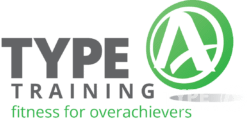































![[Voted No.1 Hydration Belt] Runtasty Winners' Running Fuel Belt](https://mlrsaszawtm3.i.optimole.com/cb:4PHY.45cbb/w:auto/h:auto/q:90/f:best/ig:avif/https://www.typeatraining.com/wp-content/uploads/2023/10/51nwUsnj-3L._SL500_.webp)














